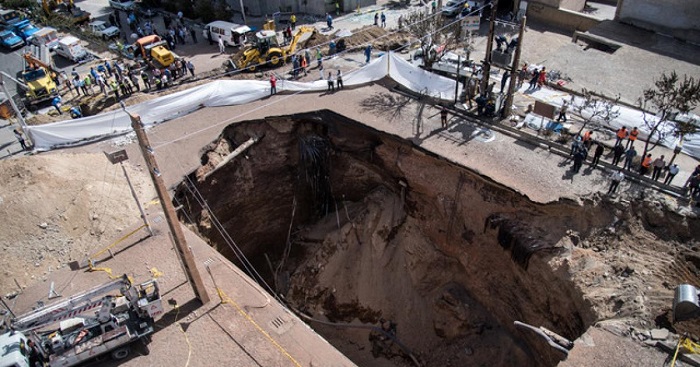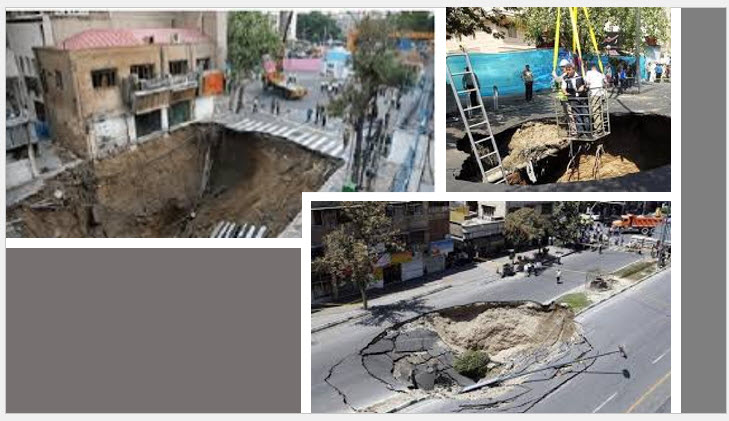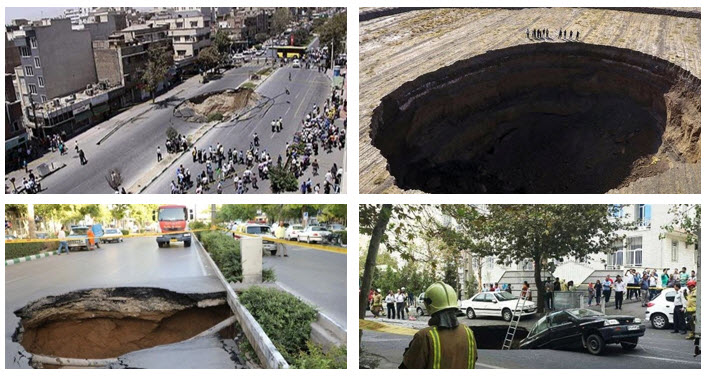
Iran has one of the highest rates of land subsidence, estimated to be ninety times that of developed countries.
While many countries face environmental threats, Iran, under the mullahs’ regime, is on the verge of becoming an environmental disaster. Many Iranian environmentalists warn that many Iranian cities are on the verge of total collapse due to subsidence. Land subsidence has been the country’s most serious environmental crisis in recent years due to water stress. The situation has progressed to the point where Iran’s state media and regime officials are acknowledging the dire reality.
“Iran has the world’s fourth-largest land subsidence, according to Ali Baitullahi, Director of the Road, Housing, and Urban Development Research Center. On October 16, 2021, the state-run Tejaratnews reported, “We have less than 10 years, all plains in Iran are sinking, and the risk of this happening in Isfahan is much higher than in other cities.”
It’s worth noting that the Iranian Geological Survey reported in early 2021 that only about 500 of Iran’s 609 plains have freshwater, and all of them are subject to subsidence. Subsidence has reached the city of Isfahan. A video from southern Isfahan in September showed deep holes up to 12 meters deep. Close to the Isfahan-Shiraz railway, these holes pose a serious threat to commuter trains.
“Over 100 schools were evacuated and closed last year due to land subsidence threat,” said Isfahan’s governor, according to the semi-official ISNA news agency on May 17. This issue, however, is not unique to Isfahan.

The state-run Tejaratnews reported, “We have less than 10 years, all plains in Iran are sinking, and the risk of this happening in Isfahan is much higher than in other cities.”
“In Tehran, subsidence is a serious problem that is more prevalent and significant in southwest Tehran. On May 18, the state-run Mehr news agency quoted Mehdi Abbasi, Chairman of the Islamic Council of Tehran’s Urban Planning Commission, as saying, “This phenomenon may damage monuments adjacent to landslides.”
The Intel Labs Research Group also issued a warning on July 1 about massive ground subsidence in Tehran, describing it as a “silent ticking bomb.” Ground subsidence “is now catching Tehran city itself for the last years,” Intel Lab said, citing satellite images.” Excessive groundwater extraction has caused land subsidence at a rate of up to 25 centimeters per year in some areas,” according to the Intel Lab.
Iran’s ruling theocracy has relied heavily on oil and gas export since hijacking the anti-monarchical revolution in 1979. Iran’s national wealth, however, has been squandered on terrorism and oppression. Tehran has increased oil and gas extraction without improving infrastructure in order to keep cash on hand for its mercenaries and illegal activities. As a result, increased extraction of petroleum and natural gas without regard for environmental consequences has aided the emergence and spread of subsidence.

The Intel Labs Research Group also issued a warning on July 1 about massive ground subsidence in Tehran, describing it as a “silent ticking bomb.
Furthermore, the construction of unscientific dams by the Revolutionary Guards (IRGC) and its front companies is one of the main causes of Iran’s water crisis. These dams are used by the IRGC for military and industrial purposes. The IRGC has also been drilling deep wells. Iran had only 36,000 wells prior to the 1979 revolution. However, according to official reports from 2015, there are at least 794,000 wells across the country.
Iran is on the verge of disaster as a result of the Iranian regime’s destructive policies. Historic sites in Iran’s cities of Isfahan and Shiraz are on the verge of collapsing. “Subsidence in the country starts at 25 cm and reaches two to three meters,” according to the official IRNA news agency in 2021. Millions of Iranians are at risk as a result of this phenomenon, and hundreds of Iranian cities will soon be uninhabitable.

The construction of unscientific dams by the Revolutionary Guards (IRGC) and its front companies is one of the main causes of Iran’s water crisis.
MEK Iran (follow us on Twitter and Facebook), Maryam Rajavi’s on her site, Twitter & Facebook, NCRI (Twitter & Facebook), and People’s Mojahedin Organization of Iran – MEK IRAN – YouTu

